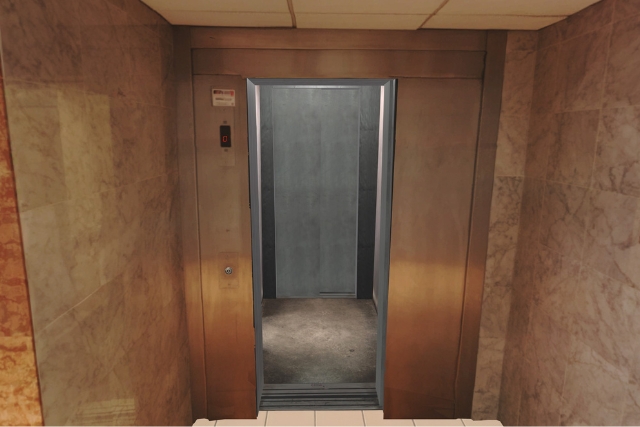Why such efficacy ?
1. Immersion
The user will be immersed in environments designed to recreate anxiety-inducing situations that may trigger claustrophobia.
2. Cognitive restructuring
They will unlearn negative reactions, such as catastrophic thoughts (“I’m stuck”), and rebuild positive thought patterns (“I am safe”).
3. Repetition
Through repeated exposures, these patterns will become quickly and permanently ingrained in your mental functioning.
4. Progressiveness
The gradual increase in the difficulty of the environments will allow the user to progressively desensitize to the anxiety experienced and regain confidence in their abilities.
5. Personalization
With Artificial Intelligence, they will be supported and encouraged in a personalized way throughout the exposures.
Receive the C2Care method for free, combining Artificial Intelligence and Virtual Reality !
The AI revolution !
All situations of oppression !
Buildings

Buildings
Buildings can be a significant source of anxiety for individuals with claustrophobia due to various triggers: elevators, small enclosed rooms, or long, narrow hallways. These situations can provoke panic attacks as individuals fear feeling trapped or unable to escape.
By precisely adjusting the environments to the user’s needs, he will be able to expose himself to all the situations that he might encounter in daily life and overcome the evasions that prevented him from moving forward.
Public Transportation
For many, public transportation is part of daily life, but for claustrophobic individuals, it can be much more anxiety-inducing. Subways, trains, buses, and airplanes are among the most triggering environments, often creating a sensation of being trapped and short of breath.
Virtual reality allows users to face these scenarios progressively, avoiding panic attacks while addressing the underlying anxiety.
Public Transportation

Tunnel

Tunnel
Tunnels can also be anxiety-inducing places. Not seeing the end, the darkness, and the narrow passages contribute to a feeling of oppression. This fear can become very restrictive due to the high frequency of tunnels, especially on roads.
Whether on foot or by car, the user will be able to pass through tunnels in virtual environments, allowing them to gradually prepare for real-life exposure.
Lives changed thanks to our method.
Feel free to customize your exhibitions for a fully immersive experience !
Each environment can be personalized by precisely choosing the situation to be exposed to :
Elevator wall transparency : Seeing the outside of the elevator can provide reassurance. Users can gradually adjust the opacity of the elevator walls to ease their anxiety.
Crowd density in public spaces : In environments such as public transportation (subway, airplane, bus) or supermarkets, the density of the crowd and the behavior of individuals can be adjusted to ensure gradual exposure.
Simulated breakdowns in transportation or elevators : The occurrence of a breakdown can be programmed to amplify the sensation of being unable to escape, allowing users to work deeply on their claustrophobia in a controlled setting.
They testify to the effectiveness of C2Care !

Gwen - User

Jordan Fannis - Psychologist
I saw in the field what it brings to my patients, satisfaction, and then with a little bit of gamification, we enjoy going to work. It creates a kind of connection between my patients and me.

Karine - User
My fear of the attic stressed me out every time my daughter played. With the C2Care virtual reality program and my ongoing treatment, I am already feeling positive effects. I am motivated to continue to overcome this fear and see my final evolution.

Bruno - User
Virtual reality therapy is truly effective, combined with consultations with a psychologist. Many thanks to Marie-Luce JACOB, for her kind listening and analytical skills. She was able to make me feel confident so that I could go beyond my limits.

Dr Redwan - Psychiatrist
The advantage is that you can precisely control the virtual environment, adjust the stimuli, adapt to the needs of the patient. There is the notion of safety that is very important, which can help them to take a step forward because they feel safer to face their fears.
Do you need further information or have any specific questions ?
Our environments in image











